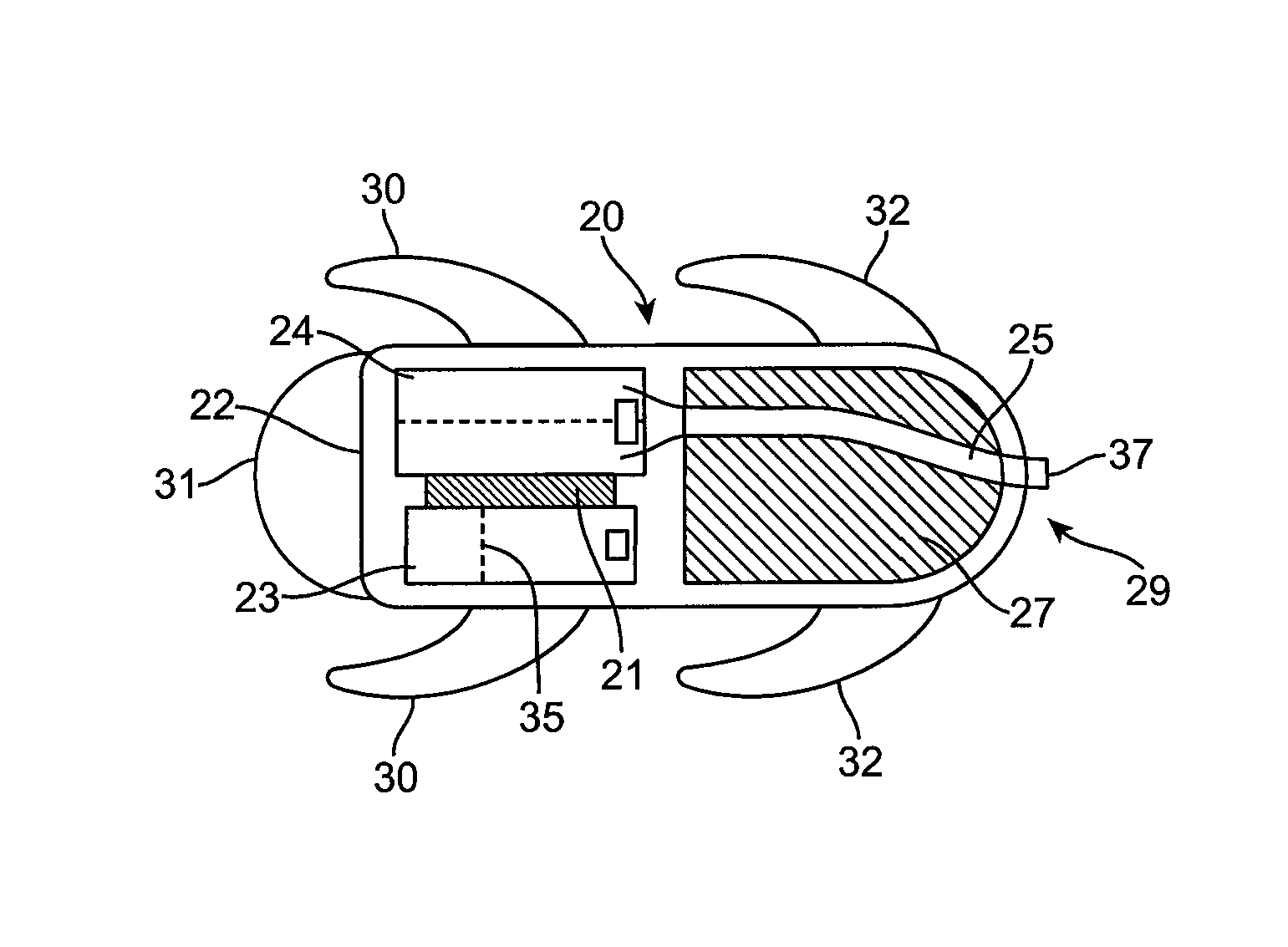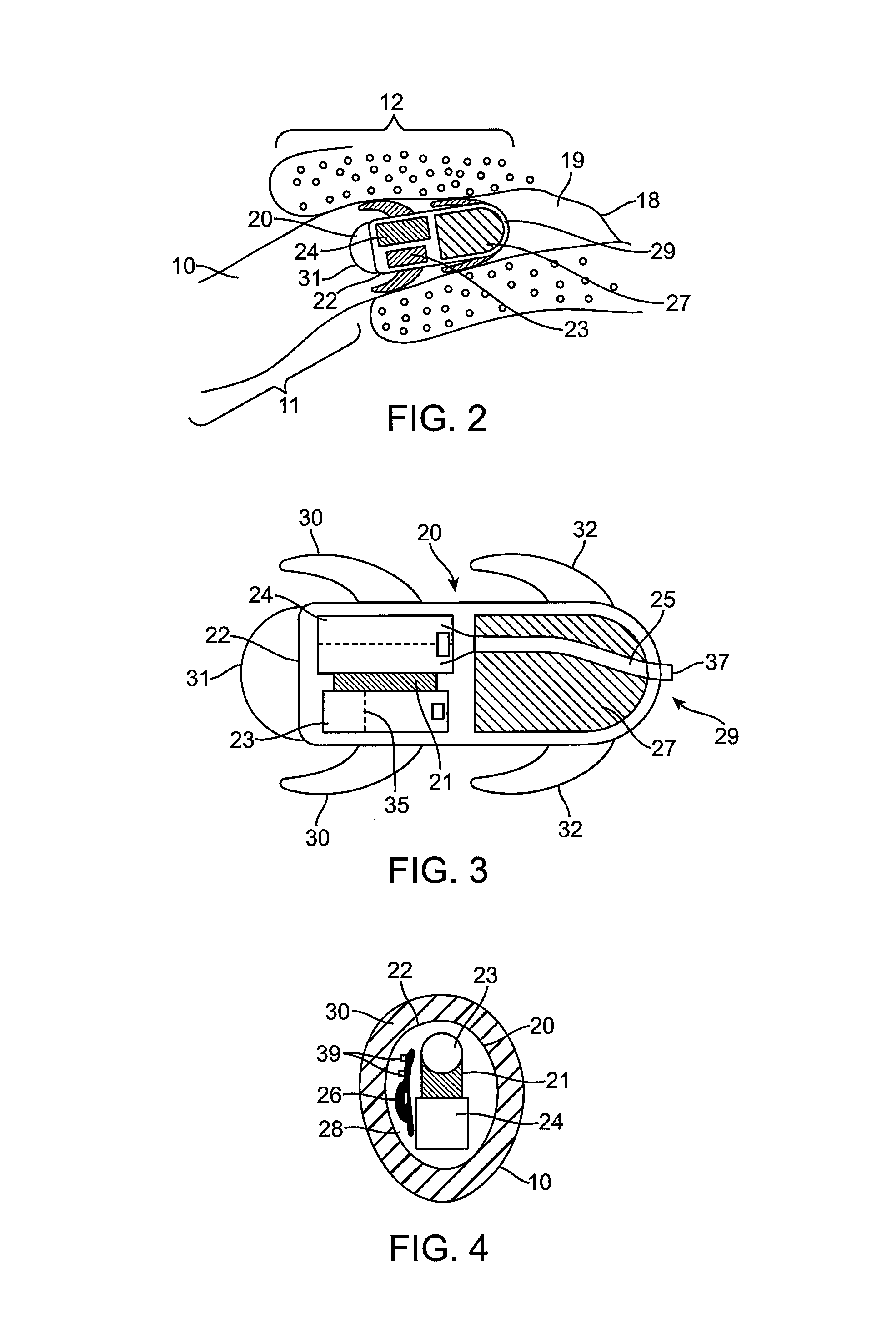Combined microphone and receiver assembly for extended wear canal hearing devices
a technology of hearing devices and receivers, applied in the field of hearing devices, can solve the problems of reducing output efficiency, reducing output efficiency, and reducing the length of speakers confecting substantial length to the hearing device, so as to minimize cross vibration and minimize feedback
- Summary
- Abstract
- Description
- Claims
- Application Information
AI Technical Summary
Benefits of technology
Problems solved by technology
Method used
Image
Examples
Embodiment Construction
[0041]FIGS. 2-4 show an exemplary hearing device 20 according to embodiments of the invention. Hearing device 20 is highly miniaturized for placement entirely in the bony part 12 of the ear canal 10 for extended wear therein. Since there is minimal debris and no canal deformations in the bony part 12 of the ear canal, hearing device 20 can remain functional and stable in the ear canal for longer periods exceeding 2 months. Hearing device 20 is highly energy efficient and can thereby eliminate resorting to daily insertion and removal as is the case with conventional daily wear devices. A novel approach is taken in embodiments of the present invention to minimize the length of the hearing device. The approach comprises placing the speaker (receiver) 24 axially in parallel to the microphone 23 within a lateral assembly 22. Lateral assembly 22 can be adapted to face away from tympanic membrane 18 when hearing device 20 is placed in the ear canal. Sound may be conducted from the speaker ...
PUM
 Login to View More
Login to View More Abstract
Description
Claims
Application Information
 Login to View More
Login to View More - R&D
- Intellectual Property
- Life Sciences
- Materials
- Tech Scout
- Unparalleled Data Quality
- Higher Quality Content
- 60% Fewer Hallucinations
Browse by: Latest US Patents, China's latest patents, Technical Efficacy Thesaurus, Application Domain, Technology Topic, Popular Technical Reports.
© 2025 PatSnap. All rights reserved.Legal|Privacy policy|Modern Slavery Act Transparency Statement|Sitemap|About US| Contact US: help@patsnap.com



